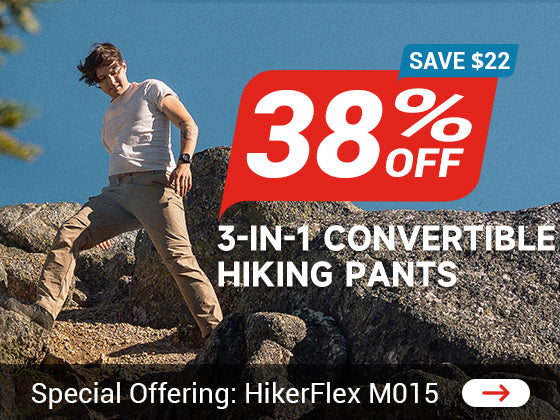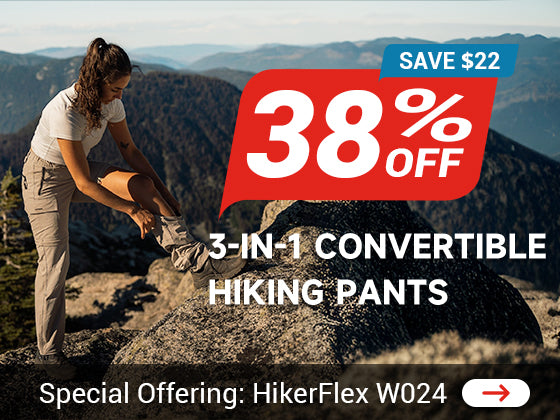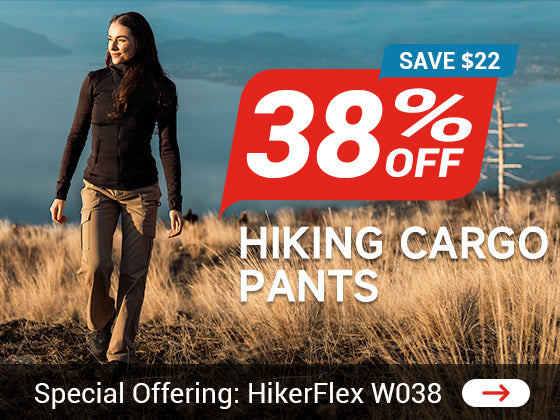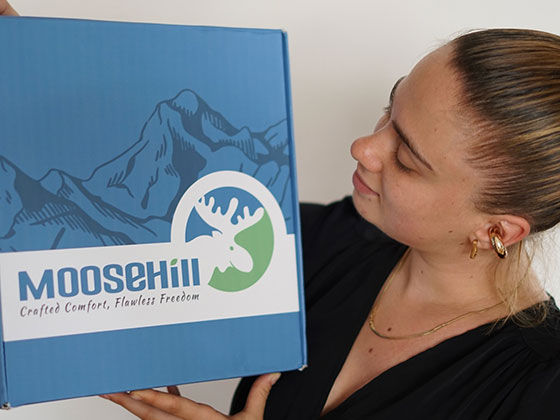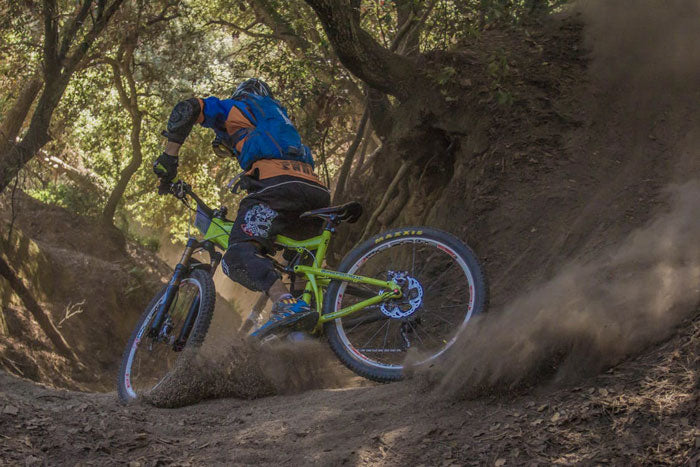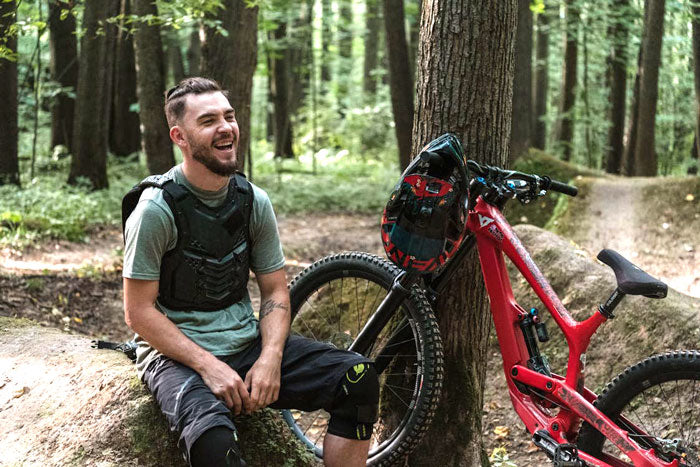Beneficios de usar pantalones cortos para bicicleta de montaña
Los pantalones cortos de bicicleta de montaña son más que una opción elegante para los ciclistas fuera de carretera; ofrecen numerosos beneficios prácticos que mejoran tanto la comodidad como el rendimiento de los ciclistas. A continuación, se presentan las principales ventajas de usar pantalones cortos de bicicleta de montaña en el sendero:

1. Comodidad
Los pantalones cortos para bicicleta de montaña están diseñados específicamente para largas horas en el sillín, ofreciendo badanas acolchadas que reducen la presión y la fricción entre el ciclista y el asiento de la bicicleta. Este acolchado ayuda a minimizar las rozaduras y molestias en el sillín, especialmente durante paseos prolongados por terrenos irregulares y accidentados. Los materiales transpirables de los pantalones cortos absorben la humedad, manteniendo a los ciclistas secos y previniendo rozaduras, incluso en condiciones de calor o humedad. Para quienes enfrentan paseos largos y agotadores, la comodidad que proporcionan los pantalones cortos para bicicleta de montaña es invaluable.
2. Protección
Los senderos accidentados por los que los ciclistas de montaña suelen transitar pueden estar llenos de obstáculos, desde rocas afiladas hasta ramas de árboles, que pueden causar rasguños o moretones. Los pantalones cortos para bicicleta de montaña están hechos de telas duraderas y resistentes a desgarros como el nylon o el poliéster, proporcionando una capa de protección contra estos peligros. En caso de una caída, los pantalones cortos ayudan a proteger la piel de abrasiones y pueden absorber parte del impacto, reduciendo el riesgo de lesiones. Muchos modelos también incluyen paneles reforzados en áreas de alta tensión, añadiendo un nivel extra de protección donde más se necesita.
3. Libertad de Movimiento
El ciclismo de montaña requiere movimientos dinámicos, incluyendo cambios rápidos en la posición del cuerpo, potencia al pedalear y maniobras sobre secciones técnicas. El ajuste holgado y los materiales elásticos de los pantalones cortos para ciclismo de montaña aseguran que los ciclistas tengan la flexibilidad necesaria para una movilidad óptima. Ya sea levantándose sobre los pedales durante una subida empinada o cambiando el peso en un descenso, estos pantalones cortos están diseñados para moverse con el ciclista, ofreciendo un movimiento sin restricciones sin sentirse ajustados o restrictivos.
4. Practicidad
Los pantalones cortos para bicicleta de montaña también son muy prácticos, ofreciendo una variedad de características que los hacen ideales para aventuras al aire libre. Muchos pantalones cortos vienen con múltiples bolsillos, que son excelentes para guardar artículos esenciales como herramientas, bocadillos o un teléfono. Estos bolsillos suelen tener cremalleras o estar asegurados con velcro para mantener los objetos seguros durante paseos accidentados. Además, el tratamiento resistente al agua en muchos modelos protege contra el barro y la lluvia, manteniendo al ciclista seco en condiciones húmedas. Esta practicidad elimina la necesidad de bolsas adicionales, simplificando el paseo y asegurando que todo lo que necesitas esté al alcance de la mano.
Los pantalones cortos para bicicleta de montaña combinan comodidad, protección, movilidad y practicidad, convirtiéndolos en una pieza vital de equipo tanto para ciclistas casuales como serios. Al ofrecer estos beneficios, permiten a los ciclistas concentrarse en el recorrido y disfrutar del sendero sin preocuparse por la incomodidad o por no estar preparados para las exigencias del ciclismo fuera de carretera.

Cómo elegir los pantalones cortos adecuados para bicicleta de montaña
Seleccionar el par perfecto de pantalones cortos para bicicleta de montaña puede marcar una diferencia significativa en tu experiencia de conducción. Con la amplia gama de opciones disponibles, es esencial considerar factores que se adapten mejor a tus necesidades, estilo de conducción y las condiciones que enfrentarás.
Aquí se explica cómo elegir los pantalones cortos adecuados para bicicleta de montaña:
1. Ajuste y comodidad
Encontrar el ajuste adecuado es crucial para garantizar tanto la comodidad como el rendimiento en el sendero. Los pantalones cortos de bicicleta de montaña vienen en una variedad de ajustes, desde ajustados hasta sueltos, y la elección depende de tu estilo de conducción:
●Ajuste holgado: Ideal para ciclistas de senderos casuales o aquellos que prefieren un aspecto más relajado. Estos pantalones cortos ofrecen más libertad de movimiento y suelen ser más transpirables.
●Ajuste Delgado: Mejor para ciclistas que prefieren una silueta más estilizada, ofreciendo menos material que ondee con el viento y proporcionando un aspecto más elegante.
●Ajustabilidad de la cintura: Busca pantalones cortos con cinturillas ajustables o cinturones para afinar el ajuste y lograr comodidad.
●Longitud: Asegúrate de que los pantalones cortos sean lo suficientemente largos para cubrir las rodillas mientras montas, para evitar rozaduras y proporcionar protección adicional contra raspaduras.
Prioriza la comodidad probándote diferentes tallas y comprobando cómo se sienten los pantalones cortos al moverte en una posición de montar. Debes tener total libertad de movimiento sin que los pantalones cortos se suban o se sientan demasiado ajustados.
2. Material
El material de los pantalones cortos juega un papel importante en la durabilidad, transpirabilidad y rendimiento general. Las opciones comunes de tela incluyen:
●Nailon: Conocido por su resistencia y durabilidad, el nailon se utiliza a menudo en áreas de alto desgaste para asegurar que los pantalones cortos puedan soportar condiciones difíciles.
●Poliéster: Ligero y transpirable, el poliéster es excelente para absorber la humedad del cuerpo, manteniéndote fresco y seco.
●Tejido elástico: Muchos pantalones cortos para bicicleta de montaña incorporan materiales elásticos como spandex o elastano para mayor flexibilidad, permitiendo libertad de movimiento.
Elige pantalones cortos con una mezcla de estas telas para obtener lo mejor de ambos mundos: durabilidad en áreas de alto impacto y transpirabilidad para mayor comodidad.

3. Acolchado (Chamois)
El nivel de acolchado, o badana, es una consideración crítica para la comodidad, especialmente en paseos más largos:
●Acolchado más grueso: Ideal para viajes de larga distancia donde pasarás mucho tiempo en la silla. Más acolchado ayuda a prevenir llagas y molestias en la silla.
●Acolchado Delgado: Más adecuado para paseos cortos o para quienes prefieren una sensación más natural al montar. Proporciona algo de amortiguación sin sentirse demasiado voluminoso.
●Forro extraíble: Algunos pantalones cortos vienen con un forro acolchado desmontable, lo que te permite personalizar tu paseo. Puedes quitar o cambiar el forro según tus necesidades.
Considera cuánto tiempo y con qué frecuencia montas al seleccionar el nivel de acolchado para asegurarte de mantenerte cómodo durante toda tu sesión.
4. Condiciones Climáticas
El clima en el que normalmente conduces debe influir en tu elección de pantalones cortos. Diferentes condiciones climáticas requieren diferentes características:
●Clima cálido: Opte por materiales ligeros y transpirables que absorban la humedad y tengan una ventilación adecuada. Los paneles de malla y las telas que absorben la humedad ayudarán a mantenerlo fresco.
●Condiciones húmedas: Busca pantalones cortos resistentes al agua o impermeables para protegerte de la lluvia y condiciones de barro. Estos pantalones cortos suelen estar tratados con un acabado Repelente Duradero al Agua (DWR) para mantener la humedad fuera.
●Clima frío: Para climas más fríos, considere pantalones cortos con materiales a prueba de viento o incluso forros térmicos para mayor calidez y protección contra los elementos.
Adaptar tu elección al clima garantiza que te mantengas cómodo y seco sin importar el tiempo.
5. Presupuesto
Los pantalones cortos para bicicleta de montaña vienen en una amplia gama de precios, y aunque las opciones premium suelen ofrecer más características, aún puedes encontrar pantalones cortos de calidad en varios rangos de precio:
●Pantalones Cortos de Alta Gama: Estos suelen venir con características avanzadas como elasticidad en cuatro direcciones, materiales reforzados, resistencia al agua y acolchado premium. Son ideales para ciclistas frecuentes que requieren un rendimiento y durabilidad de primer nivel.
●Pantalones cortos de gama media: Encontrarás un buen equilibrio entre comodidad, durabilidad y características adicionales como bolsillos o cinturillas ajustables. Estos son excelentes para la mayoría de los ciclistas.
●Opciones Económicas: Aunque estas pueden no tener todas las características premium, aún pueden ofrecer comodidad esencial y durabilidad para ciclistas ocasionales o aquellos nuevos en el ciclismo de montaña.
Equilibra la calidad y el precio según la frecuencia e intensidad con la que montas. Invertir en un par de alta calidad puede ahorrarte dinero a largo plazo, ya que tienden a durar más y a rendir mejor bajo estrés.
Al considerar cuidadosamente estos factores—ajuste, material, acolchado, adecuación al clima y presupuesto—puedes encontrar pantalones cortos para bicicleta de montaña que mejoren tu rendimiento, comodidad y disfrute en cada paseo.
--- FIN ---
Para más detalles sobre Pantalones Cortos para Bicicleta de Montaña , por favor haga clic y ¡elige los productos que mejor se adapten!

【Consejos para ciclismo】
· ¿Qué pantalones cortos usan los ciclistas de montaña?
· ¿Por qué los pantalones cortos de bicicleta de montaña tienen acolchado en lugar del asiento?
· Cómodos y Elegantes: 5 Consejos de Expertos para Pantalones Cortos de Ciclismo
【Consejos para Senderismo】
· Las reglas de oro para el senderismo en 2024
· Consejos para principiantes en senderismo
· Los 7 errores más comunes al hacer senderismo
【Consejos de golf】
· ¿Usas pantalones o pantalones cortos para jugar golf?
· Guía Rápida: Elegir los Pantalones de Golf Perfectos
· 4 Consejos para Elegir Eficientemente Tu Ropa y Accesorios de Golf
【Consejos de Esquí y Nieve】
· Qué pantalones son buenos para la nieve
· ¿Se pueden usar los pantalones de nieve como pantalones para la lluvia?

